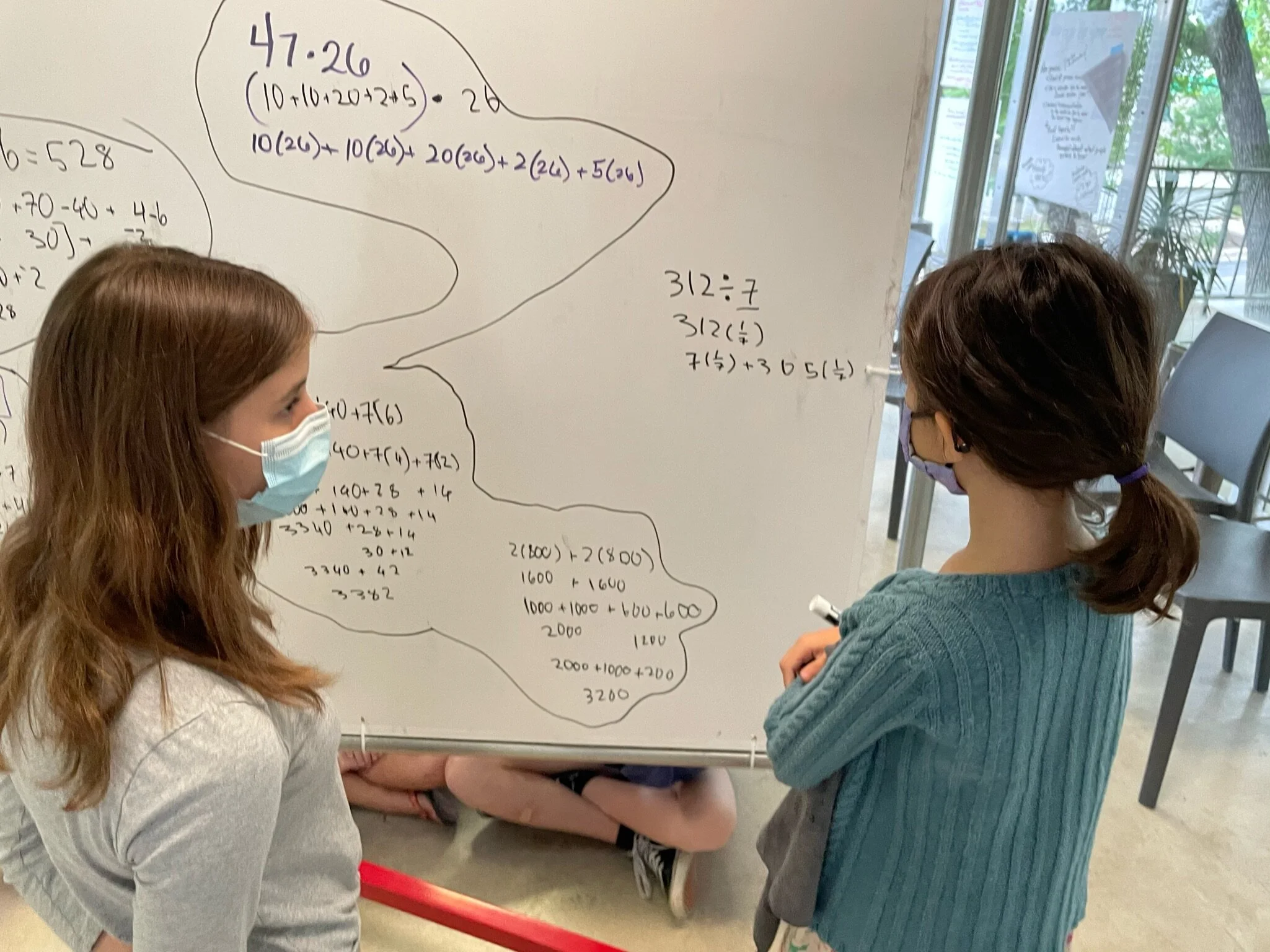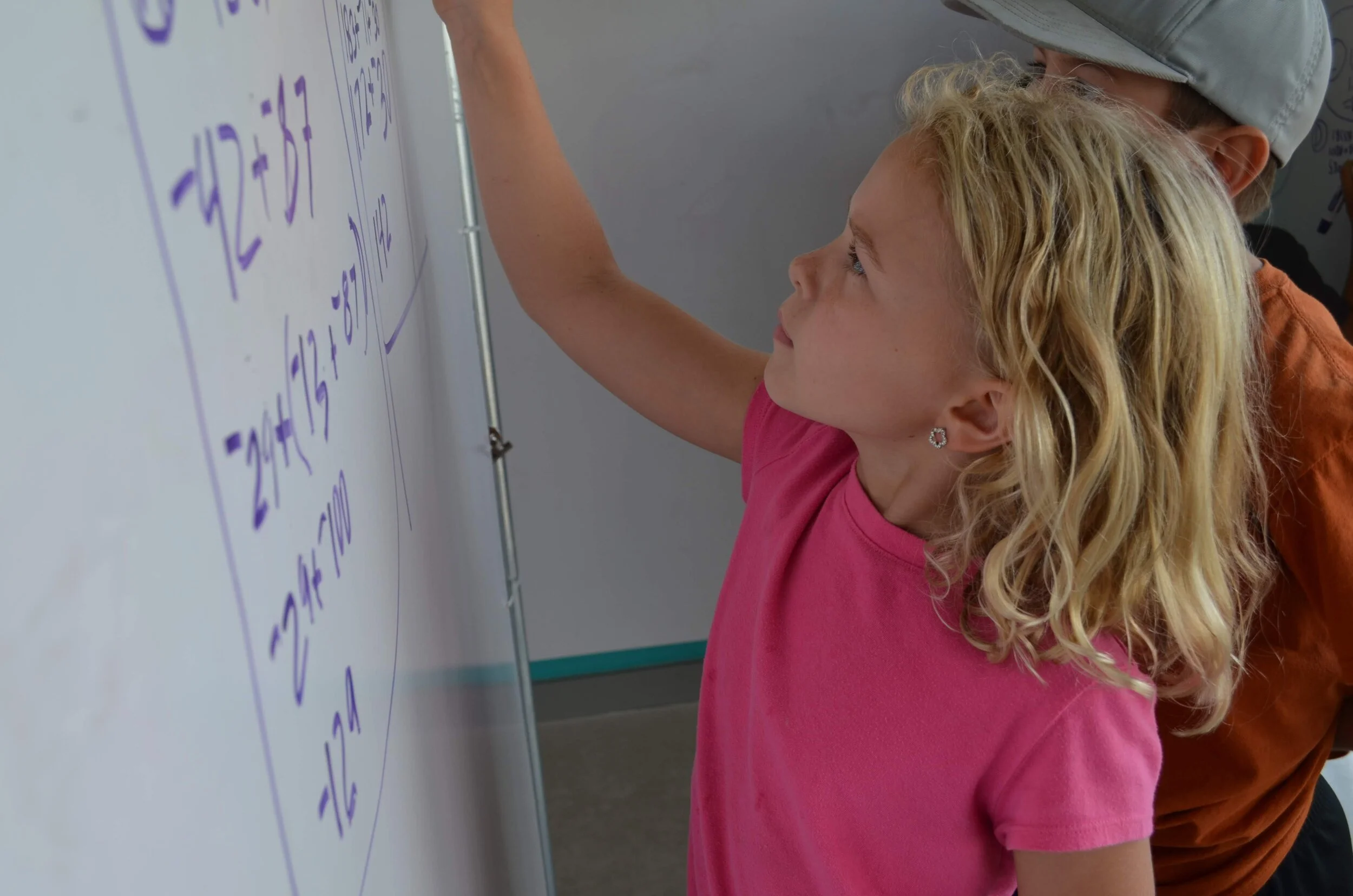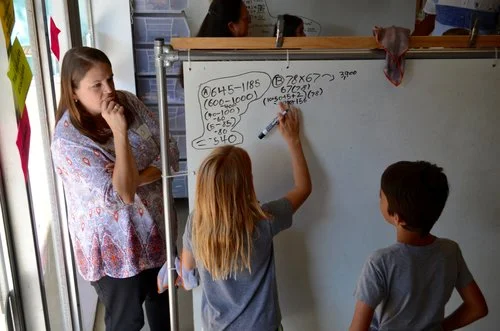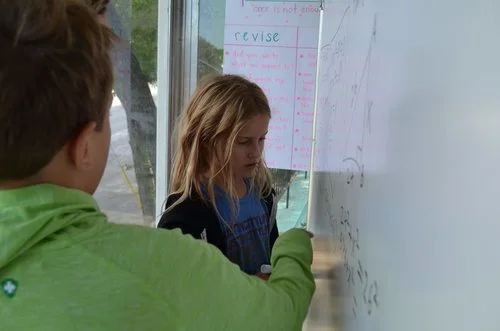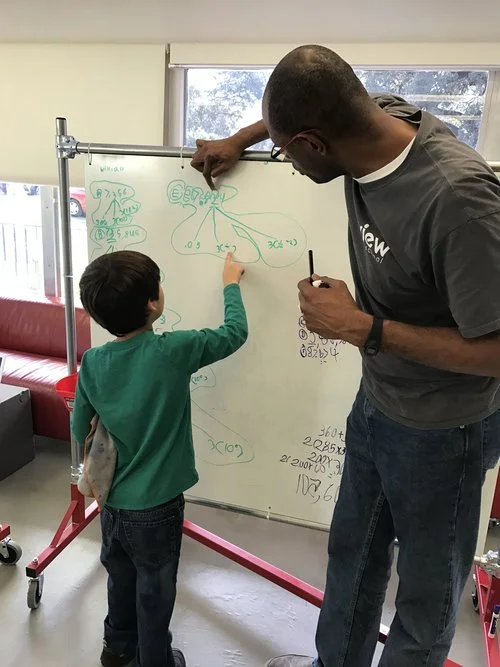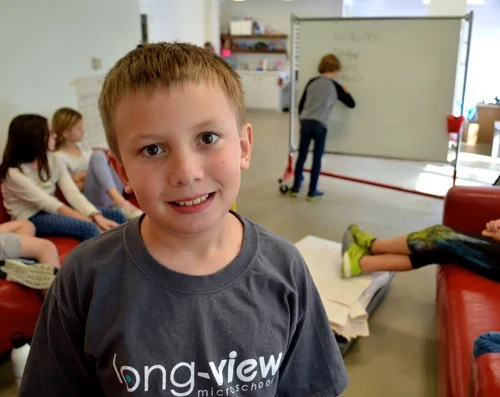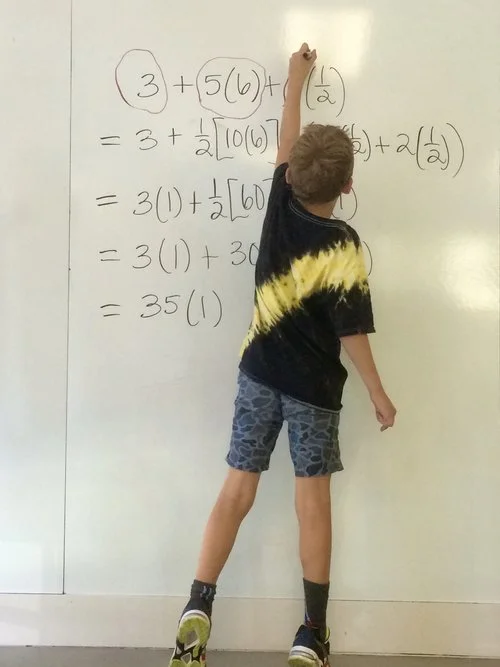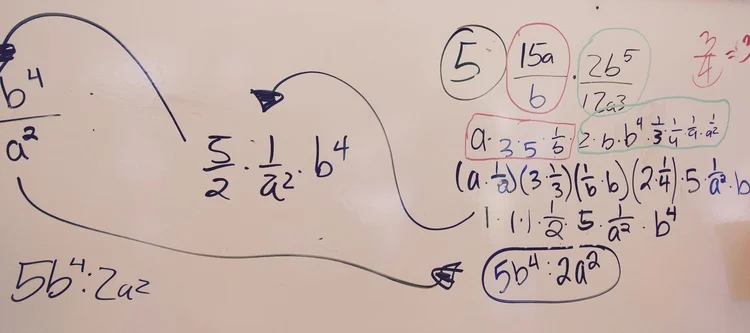Early in the year, Mr. Mann brought a challenging concept to Math Block in Sage and Crimson Bands. It wasn’t exclusively a math concept, but an invitation to think differently about risk-taking. What does it mean to be intellectually fearless?
The phrase "intellectual fearlessness” comes from the book Thinking, Fast and Slow, by psychologist and economist Daniel Kahneman. When Mr. Mann introduced the concept, learners recognized fearlessness as a sort of bravery that, to the observer, presents as a lack of fear. They observed that while a person might have the experience of feeling afraid but taking action anyway, that same person might seem “fearless” to others.
Sage and Crimson learners also grappled with the term “intellectual,” which they defined as “of or relating to the mind.” They connected the attribute with learning and conjectured that “the growth of the mind is learning.” One learner posited that intellectual fearlessness was simply “the willingness to learn.”
Ideas kept building as another young learner suggested that being intellectually fearless would include being vulnerable….
Read More


